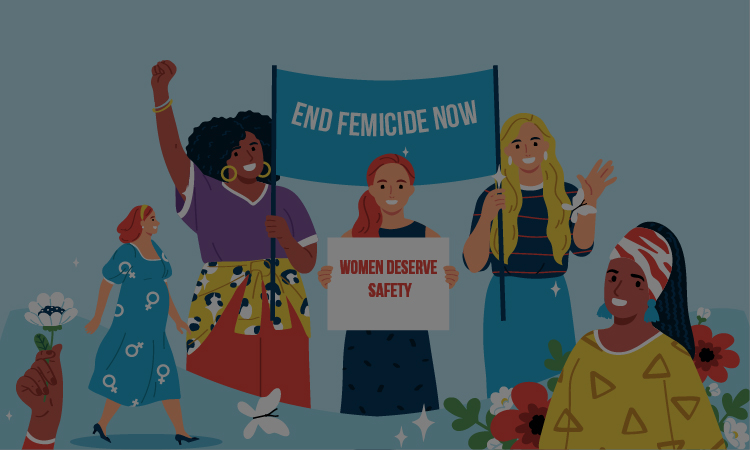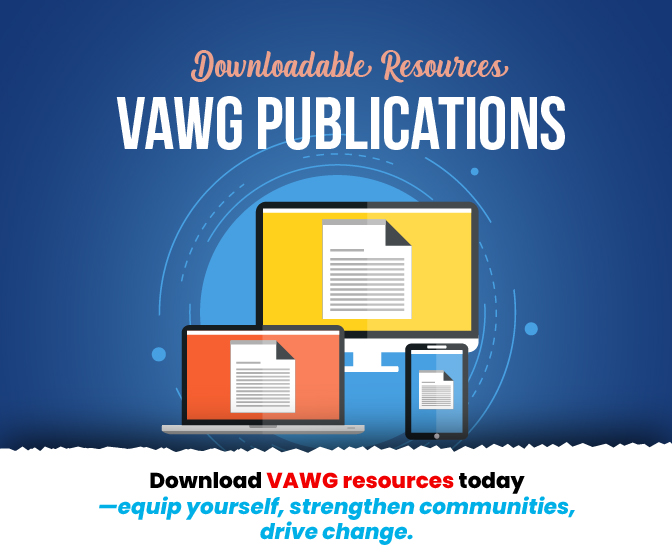Taking Action Against Femicide: Addressing the Root Causes of Violence
Femicide – the gender-related killing of women and girls – is one of the most extreme manifestations of violence against women and girls (VAWG). It is a global crisis that cuts across cultures, regions, and societies, robbing families and communities of lives that could have thrived.
According to the United Nations Office on Drugs and Crime (UNODC) and UN Women, around 89,000 women and girls were killed intentionally in 2022—the highest annual figure recorded in the past two decades. Disturbingly, more than 48,000 of these deaths were perpetrated by intimate partners or other family members, meaning that on average, a woman is killed by someone she knows every 11 minutes worldwide. These deaths are not isolated tragedies; they reflect systemic inequalities and entrenched discrimination that make violence possible.
To end femicide, we must go beyond responding to individual cases; we must confront the deeper systems, inequalities, and harmful practices that allow such violence to persist.
Addressing Systemic Inequality
At its core, femicide is not only about individual acts of violence—it reflects entrenched gender inequality. Women often face systemic discrimination in access to education, employment, health care, justice, and political participation. These inequities create an environment where women’s lives are undervalued, and their rights are routinely undermined.
Ending femicide requires a determined effort to dismantle these inequalities. Justice systems must be equipped and committed to ensuring justice for victims of femicide, while also protecting survivors of gender-based violence. This means not only prosecuting perpetrators but also ensuring accountability at every level—from law enforcement to the judiciary. Survivors must be supported with trauma-informed services, including counseling, medical care, and safe housing, so they can rebuild their lives with dignity.
Prevention Through Gender Equality
While justice is essential, prevention is equally urgent. Femicide can only be reduced if we stop violence before it begins. Prevention starts with promoting gender equality from an early age, both in public and private life.
Children should grow up with equal opportunities in education, encouraged to pursue their goals regardless of gender. In the workplace, women must have equal access to employment opportunities and leadership roles. In political spaces, women’s voices and participation must be valued and amplified.
UN Women’s research shows that countries with higher levels of gender equality record lower rates of violence against women. Promoting equal opportunities is therefore not only a human rights imperative—it is also a proven pathway to safer, healthier, and more prosperous societies.
“While justice is essential, prevention is equally urgent. Femicide can only be reduced if we stop violence before it begins. Prevention starts with promoting gender equality from an early age, both in public and private life.”
Challenging Harmful Norms and Stereotypes
Cultural norms and stereotypes that condone or minimize violence against women remain some of the strongest drivers of femicide. Ideas that women are inferior to men, that they must be submissive, or that men have the right to control women’s choices, all contribute to cycles of abuse that can end in deadly violence.
Breaking these cycles requires community-wide engagement. Faith leaders, teachers, parents, and youth groups all play critical roles in reshaping attitudes. Media campaigns can highlight positive models of gender equality and call out harmful stereotypes. Schools can integrate gender sensitivity into their curricula. Local organizations can create safe spaces where women and men learn together to challenge entrenched biases.
It is not enough to address violence behind closed doors; it must be challenged in the open, until harmful norms lose their power.
Collective Responsibility for Change
Ending femicide is not the responsibility of women alone—it is a collective responsibility. Governments must invest in prevention and response systems. Law enforcement agencies must improve their sensitivity and accountability. Employers and institutions must ensure safe, inclusive workplaces. Men and boys must become allies in dismantling harmful stereotypes and standing against violence.
Above all, communities must unite in affirming that every woman’s life has value, dignity, and rights. Femicide is preventable, but only if we commit to tackling it from every angle: justice, prevention, equality, and cultural transformation.
A Call to Action
Taking action against femicide requires courage and persistence. It requires listening to survivors, amplifying their voices, and ensuring their needs drive our policies. It requires holding perpetrators accountable without exception. And it requires each of us—whether as leaders, educators, parents, colleagues, or neighbors—to challenge the attitudes and behaviors that allow violence against women to continue.
A world free from femicide is possible. It begins with our collective resolve to create societies where women and girls can live without fear, thrive with equal opportunity, and be valued for who they are. Ending femicide is not just about preventing deaths—it is about affirming life, dignity, and justice for all.
Sources:
UNODC & UN Women, Gender-related killings of women and girls (Femicide/Feminicide), 2023.
WHO Global Database on Violence Against Women, 2022.











